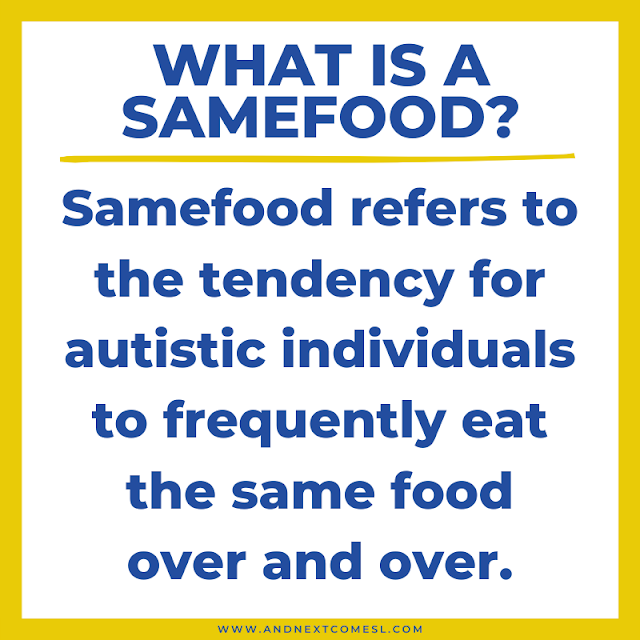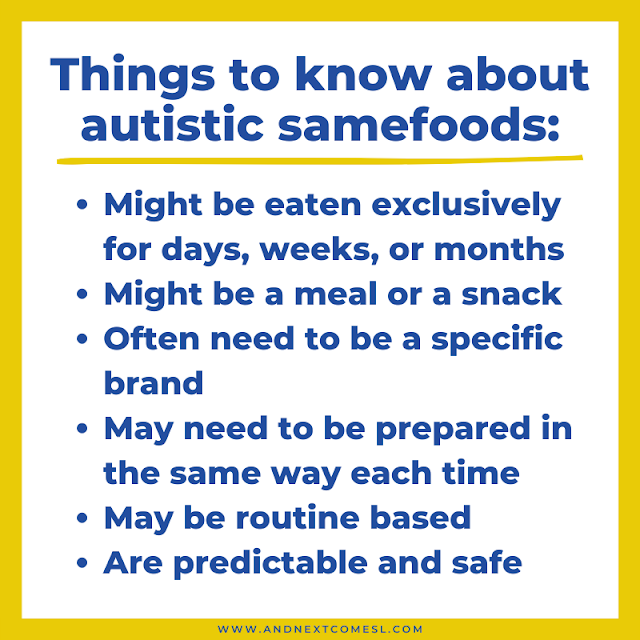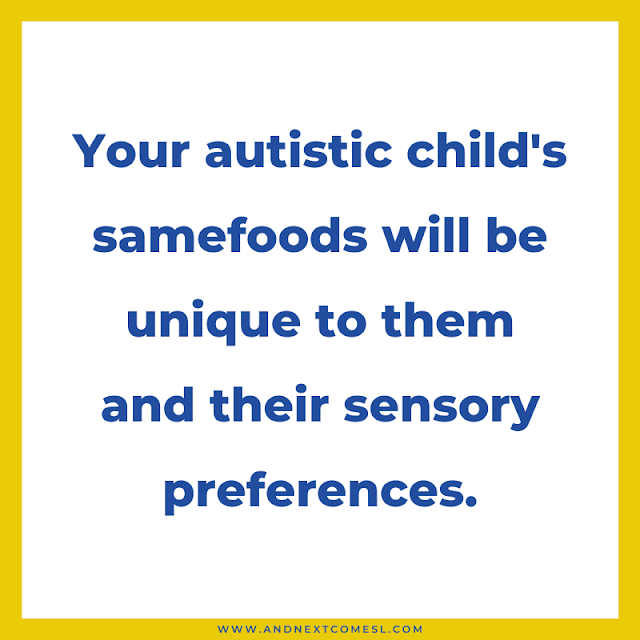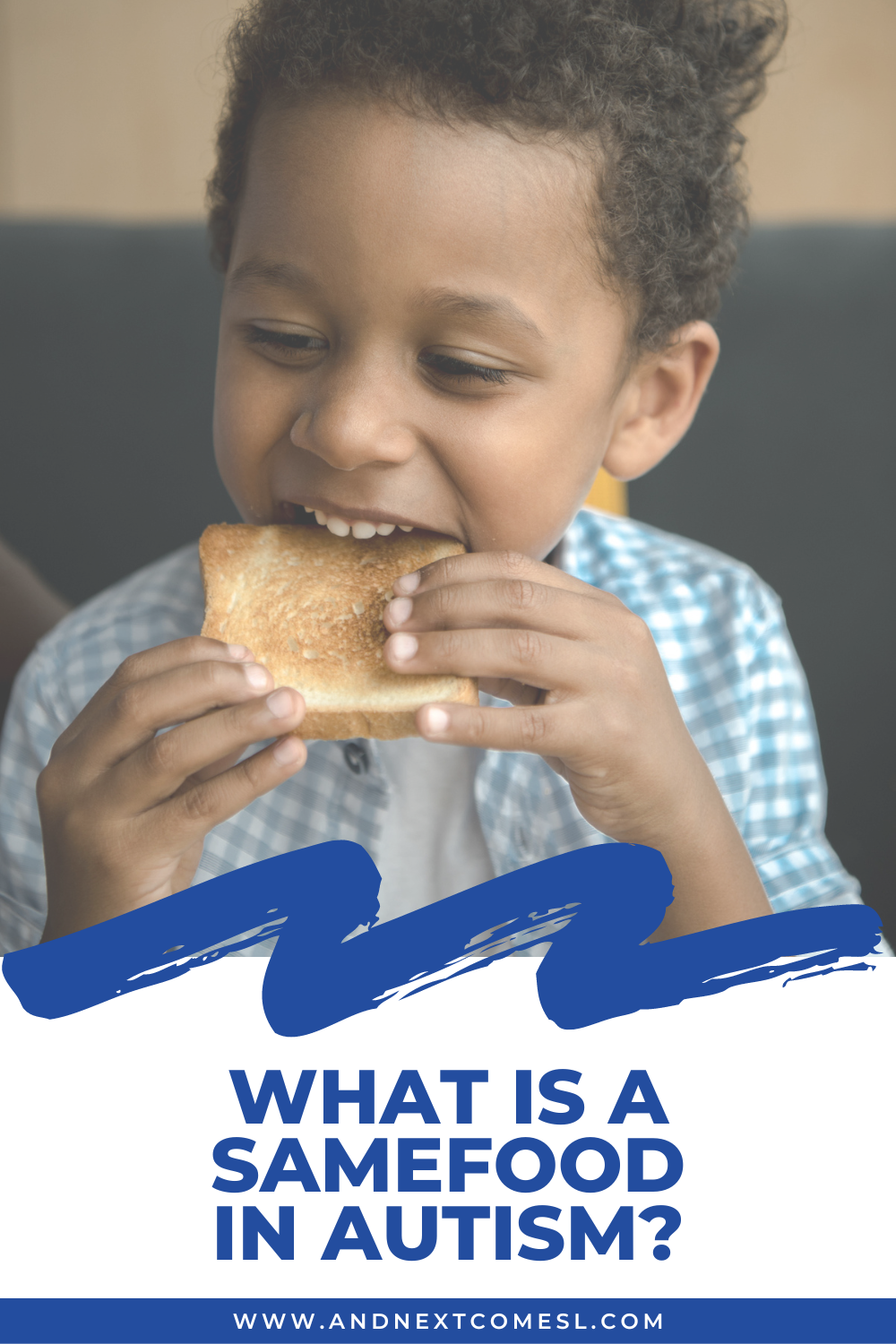Have you noticed that your autistic child prefers to eat certain foods over and over? Or that they'll only eat a specific food if it's prepared a certain way?
Perhaps you've heard of the stereotypical autistic child who only eats chicken nuggets...
Well, that's what we're talking about when we talk about samefoods in autism. Many autistic people happily eat the same thing every day.
But what is a samefood exactly? And why are they so important for autistic kids and adults? Well, let's take a closer look at this important part of autistic culture.
What is a Samefood?
Samefood refers to the tendency for autistic individuals to frequently eat the same food over and over. It might be a food that is eaten exclusively for days, weeks, or even months at a time and they could eat the same exact things day in and day out.
A samefood might be a meal or a snack. They might be simple foods or bland foods. They might be food from the frozen food section, something spicy, something homemade, or something different entirely.
Regardless, samefoods are foods that the individual will always love and always eat. Favorite foods, if you will.
Please note that samefoods will vary from autistic person to autistic person. They don't all just eat chicken nuggets and that's it!
It's important to note that samefoods often need to be a specific brand and be prepared in the same way each time. They may also need to be eaten in a particular manner or order (aka they may be routine based). You can't just serve up pasta with a different sauce, for instance.
In other words, the food needs to remain the same each and every time they consume it. Hence, the term samefood. Otherwise, it just doesn't taste right.
Why Samefoods are Important for Autistic People
When eating, you receive sensory input about a food's temperature, texture, flavor, smell, appearance, and more. It's a lot of sensory information to be receiving at one time.
For some people, all of that incoming sensory information can be overwhelming and quickly overload the senses. After all, different sensory profiles mean different sensory responses and many autistic people have specific sensory aversions.
Furthermore, some food can be wildly unpredictable, especially fresh fruit and vegetables.
The food may be sweet one time, too squishy the next, and then tart the next time. There's a reason why so many kids in general have certain food aversions and instead stick to things like crackers.
In other words, if food causes sensory issues at all for your child, then this unpredictability of certain foods may be too much to handle. So that's where samefoods come in.
After all, samefoods are predictable and safe. You know, based on previous experiences, that it won't cause sensory issues or overwhelm you. You know you don't have to worry about an unexpected flavor, smell, or texture because it literally tastes the same each and every single time you eat it. Plus, you know you already like it and will continue to like it.
In a way, samefoods are reassuring and comforting for autistic individuals. They know they can trust it to remain constant and not cause sensory issues.
Your Autistic Child & Samefoods
As discussed above, your autistic child might like to eat the same foods over and over, day in and day out because these samefoods are consistent, predictable, and safe. They don't overwhelm the senses and they taste the same each and every time they're consumed. So samefoods are comforting for your child.
There are certain mealtime experiences, however, that might be challenging as a result. For instance, eating at a restaurant or big holiday meals with family.
Offering your child a samefood during these times may be helpful. For example, I used to pack a can of Heinz brown beans in my purse as a backup when my son was younger because I knew he would always eat those if there was nothing else for him to eat.
You might also notice that your child has an intense reaction or even a meltdown when packaging for their samefood changes. Or if the samefood now suddenly has a "new and improved flavor" or they added an additional flavor to the bag (I'm looking at you sweet potato Veggie Straws!). These changes can be triggering for some because all of a sudden their predictable samefood is no longer predictable.
Perhaps your child's preferred samefoods are rather bland or boring, at least in your eyes. Well, guess what, plain food or food with simple flavors can't overwhelm the senses. So that's why your autistic child might gravitate towards them. As my son likes to tell me about his food preferences, "The plainer and more boring, the better!"
Although, please note, that samefoods aren't synonymous with bland or boring foods. Your autistic child's preferred food might something spicy and hot like chili or a generous helping of buffalo hot sauce on literally everything.
Remember, your autistic child's samefoods will be unique to them and their sensory preferences.
So does your child have a samefood? And is it chicken nuggets or something else? 😜







